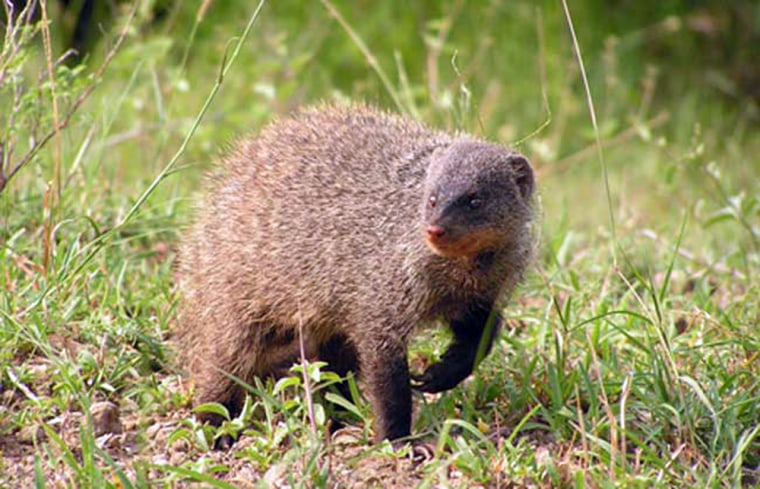Takeovers are the norm and boundaries are marked with feces, urine and anal secretions in a mongoose's world, so there's no such thing as a friendly neighbor.
Mongooses, small catlike carnivores, engage in brutal battles with neighbors. But a new study finds the animals are nowhere near as defensive with strangers.
Researchers captured video of the social animals as they sniffed out enemies and sent out alarm calls, showing that banded mongooses aggressively defend against neighbors while allowing absolute strangers to cross right into their territories.
Border dance
Banded mongooses lay down their scent marks with a little dance, in which they pitter-patter their back feet during urination and drag their rumps along the ground to deposit anal secretions.
"Scent marks of neighbors are encountered regularly at the border of the home ranges, since they usually have an area of overlap," said lead study author Corsin Müller of the University of Zurich.
Meanwhile, foreigners looking for a place to settle down also will usually wander into a resident's territory and leave their scent marks.
To compare the mongooses' different responses to neighbors and strangers, Müller and his colleague Marta Manser studied a wild population of more than 200 banded mongooses in Queen Elizabeth National Park in Uganda. In separate trials, the scientists scattered samples of urine and feces in the center and along the edges of seven territories. The excrement was collected from two neighboring groups, strangers (or non-neighbors) and the resident group.
More than twice as many mongooses bellowed worry calls in response to neighbor scents than for those from strangers. The chatty calls elicited a response from clan mates that scuttled toward the spot and participated in the yelling. Also, the animals nose-inspected many more samples from neighbors compared with strangers.
So mongooses clearly treated neighbors as more of a threat than strangers.
Nasty neighbors?
Animal behavior scientists follow two lines of thinking to predict interactions among social creatures. Both hypotheses tend to support more amicable relations between neighbors compared with strangers. That's because while well-established neighbors are more predictable and likely pose less threat, strangers compete for your new living quarters and mates.
In the case of banded mongooses, however, it turns out that neighbors can be the nastiest enemies, as they invade your territory, kick out same-sex individuals (reducing the pool of competitors for mates) and take over. So animals with intense conflict like this at their borders — as with the banded mongooses — would be expected to respond to neighbors with high aggression.
"I would definitely expect to find similar results in other social species," Müller told LiveScience, "particularly species that engage in fierce fights with neighboring groups, such as wolves, lions, meerkats or chimpanzees."
The study was published online earlier this year by the Proceedings of the Royal Society B.
